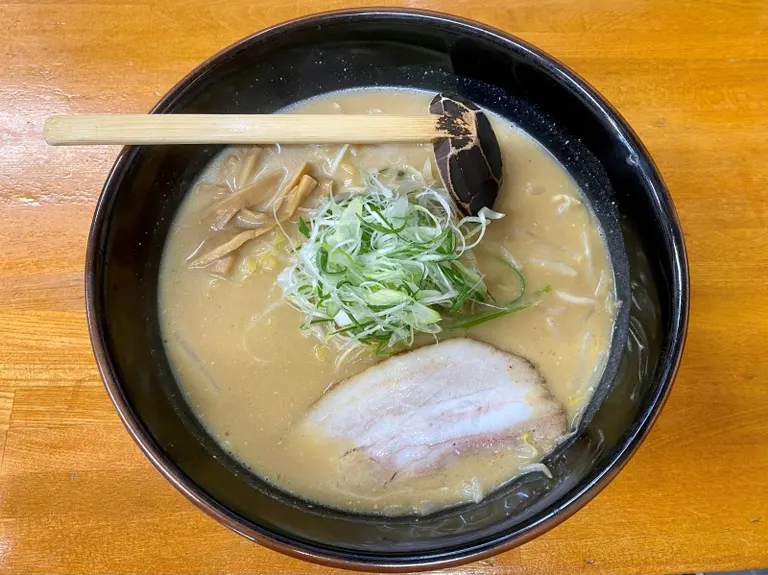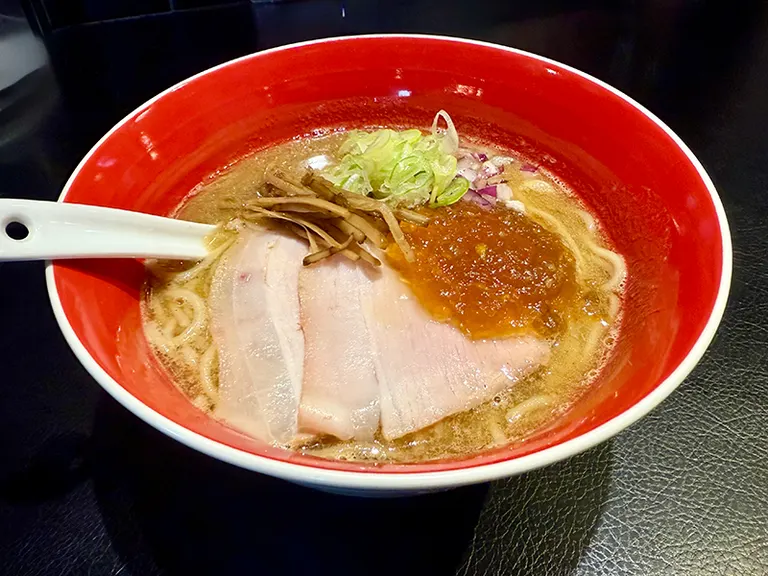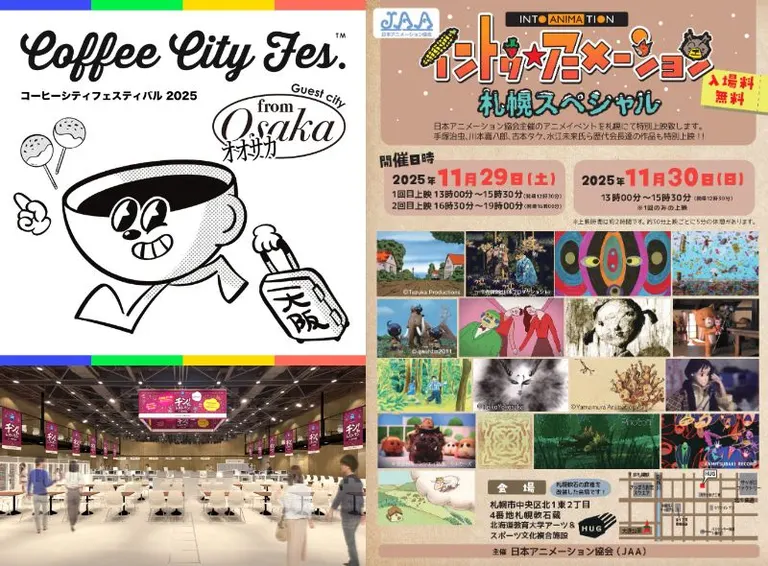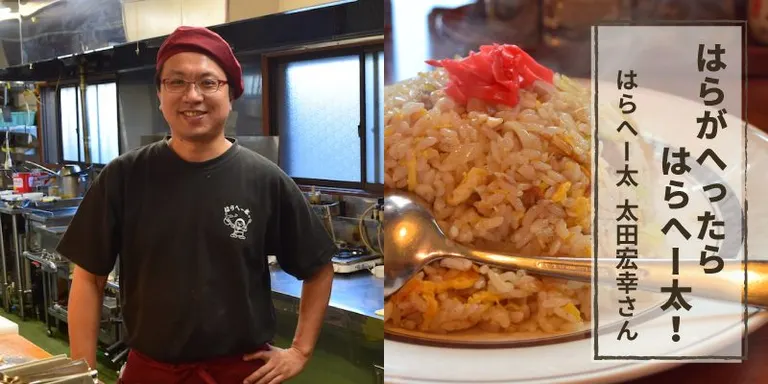
ARTICLES
If you're hungry, come to "Haraheta"! A popular restaurant that has been loved by generations for over 60 years
Haraheta, a popular restaurant in the area
Haraheta is a public restaurant that has been in business since 1961 (Showa 36). The menu has a whopping 48 different dishes! From katsudon and omelet rice to ramen and sweet and sour pork, Haraheta offers a wide variety of standard Japanese, Western and Chinese dishes, so even if you're dining with a large group, everyone can eat what they like. It's such a great place.
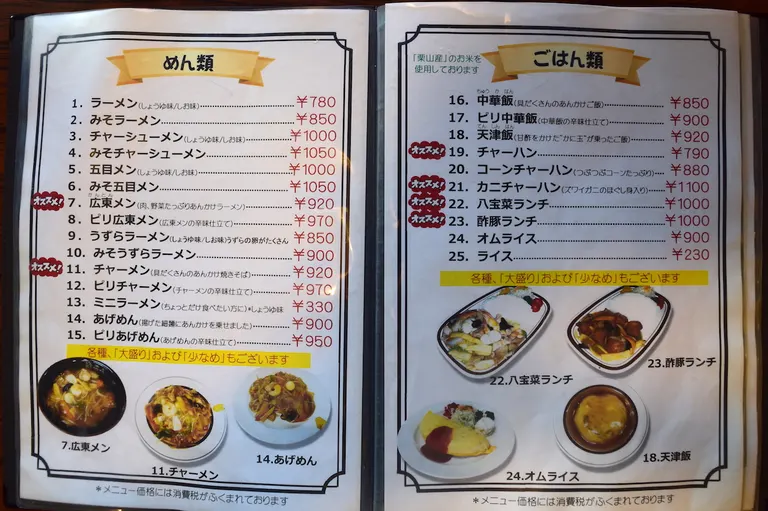
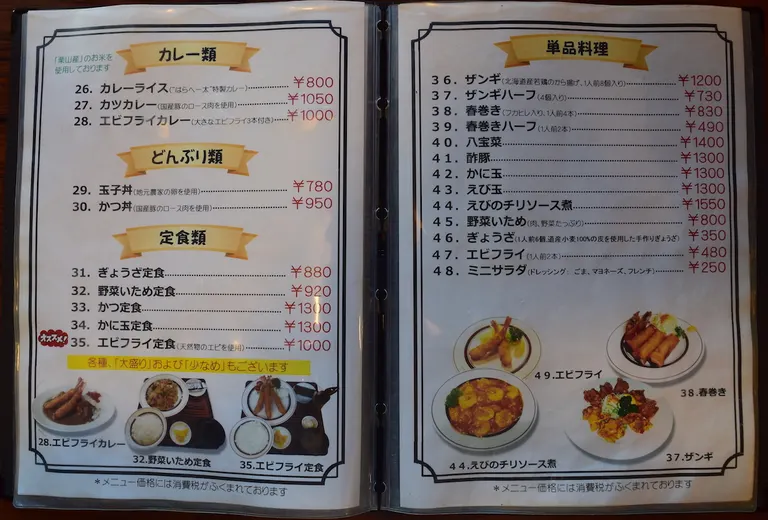
Among the most popular dishes are fried noodles, fried rice, Cantonese noodles, and sweet and sour pork lunch. They try to use locally produced ingredients as much as possible. In particular, the fried rice is made using rice and eggs produced in Kuriyama Town throughout the year, as well as green onions produced in Kuriyama Town during the harvest season. The roast pork is made using meat from Hokkaido. This is a restaurant that has become deeply rooted and loved in the town, serving food that you'll never get tired of, even if you eat it every day.
The history of Haraheta
The current store manager is Ota Hiroyuki, the third generation owner. Haraheta was originally founded by Hiroyuki's grandmother, who was a housewife, and has been in business for over 60 years. Although it now attracts a wide variety of customers, it seems that there were also difficult times. "There were days when we only sold two bowls of ramen. One time the shop burned down in a fire. My grandmother suffered severe burns during that time, but she continued to work there. My father saw my grandmother struggling and wanted to help her, so he took over as the second generation owner and made the shop flourish. So now, about eight years ago, I became the third generation owner and manager of the shop."
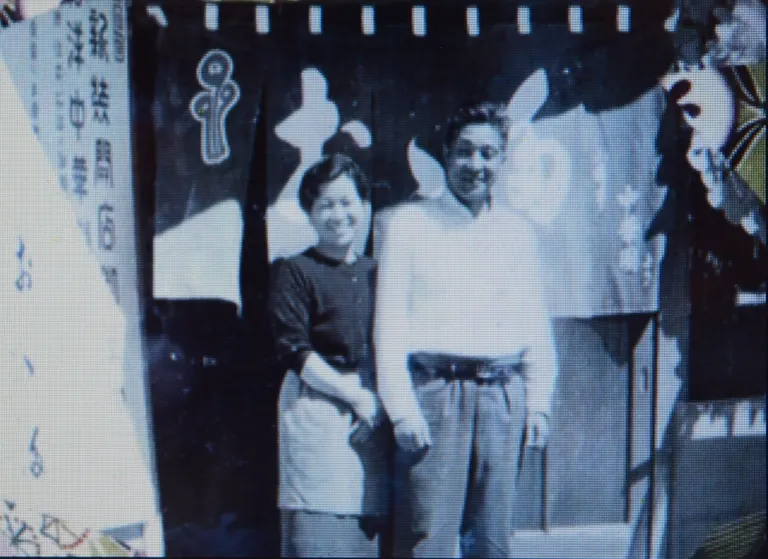
Ota Shokudo (the predecessor of Haraheta) when it was first established
The warm atmosphere at this store has been passed down through the generations, and there are many regular customers who return time and time again. "After 60 years in business, the children who have been coming to eat at our restaurant since they were little are now all getting bigger. From children to the elderly, we even have people who come as four generations during the Obon festival. I feel like we've been building up a history together with everyone." Many of the menu items have remained the same since the restaurant first opened, but they do change to keep up with the times. They say they are always on the lookout for trends and always keep an eye on what is currently in demand. What Ota is conscious of as being needed right now is "history." "It's not possible for a restaurant to continue for 60 years everywhere, so I think this is a brand. For example, the pork slices in the fried rice are not bought from anywhere, but are made in Hokkaido and stewed in our own broth. We've been adding more and more of this broth for decades, so the flavor of the meat has already seeped out. It's not something you can replicate overnight."
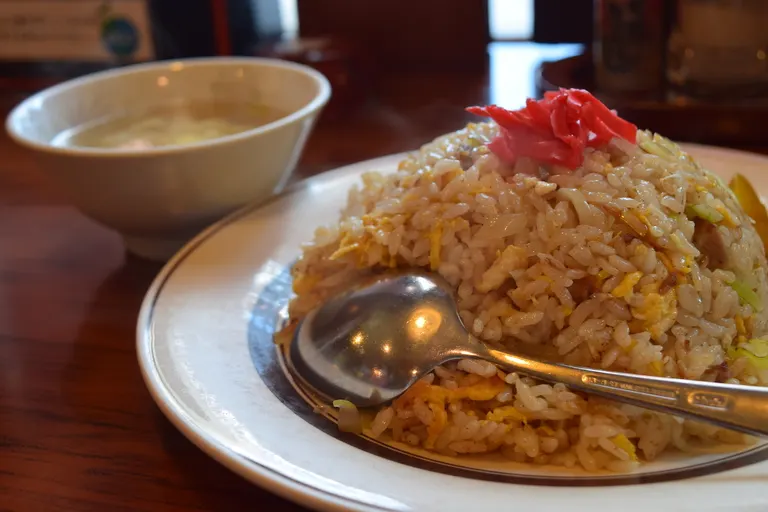
There is no doubt that the deliciousness that only Haraheta can create, with its accumulated history, is one of the reasons why it is loved by customers.
The secret to the deliciousness of Haraheta is "sincerity towards customers"
Since Hiroyuki took over as the third generation owner, Haraheta has seen big changes inside the restaurant. For example, in order to ensure a consistent taste, we worked on creating recipes. In the past, many restaurants would season their dishes by the serving size, such as "roughly one tablespoon," but that would not allow them to provide food of consistent quality, and if they didn't have a set recipe for one portion, there was no way they could make delicious food for 10 or 100 people... Based on this idea, Hiroyuki decided to create recipes for all of his menu items. They also focused on streamlining work, and in order to reduce the number of steps required to complete work in the kitchen, they reviewed the layout of even a single plate, changed the kitchen design, and changed the flow of people. What previously took two people an hour can now be done by one person in 20 minutes by using machines, creating an environment in which staff can move around easily in the kitchen. "At the end of the day, it all comes down to wanting to provide good products to our customers quickly. I used to work as an office worker, so I understand how precious lunch breaks are. In order to respond to that feeling, I try to balance "speed" and "good quality." I'm conscious of every second.
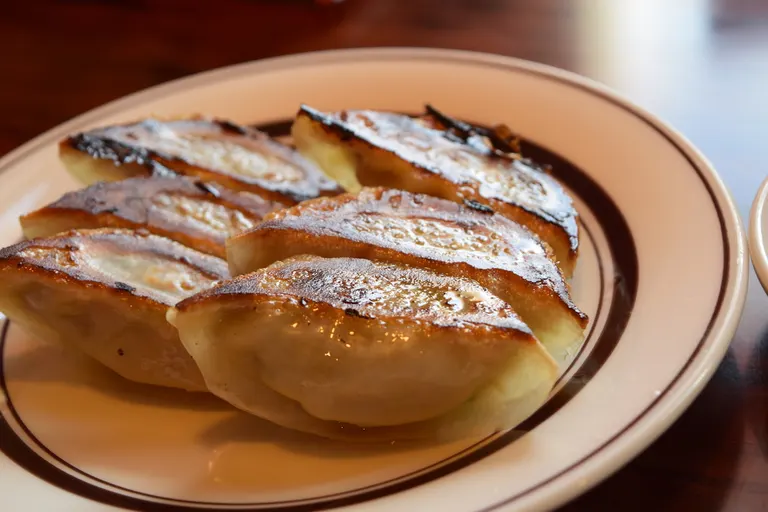
He also says that there is something he places great importance on in customer service: "Knowing the customer." Amazingly, Ota has a database of hundreds of customers who come to his restaurant or order takeout, including their preferences, usual orders, and likes and dislikes about certain ingredients...! "Knowing our customers. I think that's one of the things we can do to provide customer service. So even if a big chain store comes to a rural area like this, like a black ship, we can't lose when it comes to knowing our customers. It's not an easy thing to do, so we use that as one of our strengths."
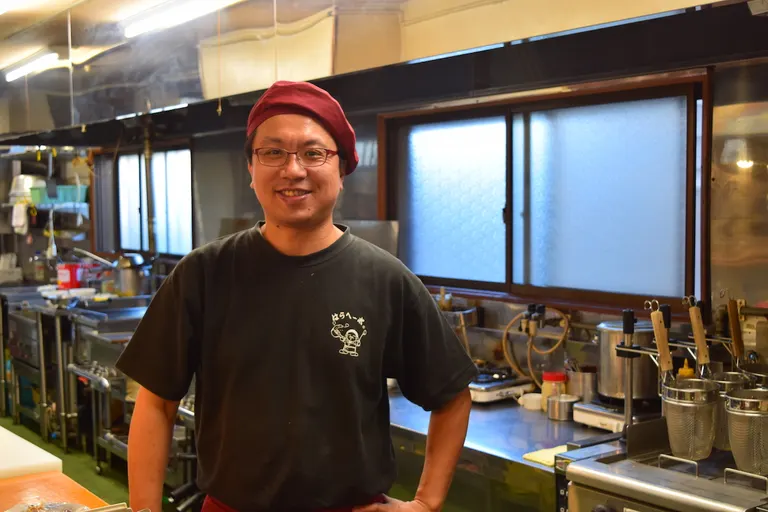
When I tried Haraheta's fried rice, I felt, "This is the kind of fried rice I want to eat forever, even every day." The reason for this is that the food is made with great care and sincerity, as Hiroyuki explained. I hope everyone will try Haraheta's food and experience it for themselves.
From engineer to kitchen: Hiroyuki, the third-generation owner who left his job to take over the restaurant
Hiroyuki worked as a systems engineer designing semiconductors at a major company in Tokyo. He returned to Kuriyama from Tokyo in 2010 and helped out at the restaurant while attending school to get a chef's license. Although he had been conscious of the idea of "taking over the business" since he was a child, he had doubts about simply taking over the business in an escalator-like manner. "I thought that if I took over the business, the growth of the store would be stunted. I have always thought since I was a child that, like salmon, we need to be released into the river as young fish and then go to the sea to grow." Hiroyuki says he learned a lot from working in semiconductor design, a completely different industry. "It was a big company with 100,000 employees including group companies, so I think I learned a lot about management, such as the way different people think and what it means to run a big organization. There were times when people wondered how far I could go as someone who was doing something completely different, but I think that the fact that I had seen so many different things was actually one of my strengths." The streamlining of management and work that I have been working on at Haraheta is connected to what I learned during my time as a systems engineer.
We want to be a store that is loved and where people of all ages and genders can feel comfortable.
When I asked Hiroyuki, "What kind of store do you want to be?", he answered that he wants to be a store that continues to be loved. After hearing about the various ideas he has used to create a store that is loved, his words carry weight. "I want to continue making special products that are not ostentatious, but are modest but unique and difficult to imitate. We are never satisfied with the food we serve. We take notes, experiment with different heating times, and spend our days researching and researching. In the midst of all that, I think the greatest reward of my job is when a customer casually says, "Ah, that was delicious!" as they leave. It's all done with sincerity." Once you try the dishes at Haraheta, you'll be sure to find yourself wanting to eat the fried rice, fried noodles, and Cantonese noodles again! I feel like I've caught a glimpse of the reason behind this, in their strong desire and sincerity to meet customer expectations, and their never-ending quest for flavor.
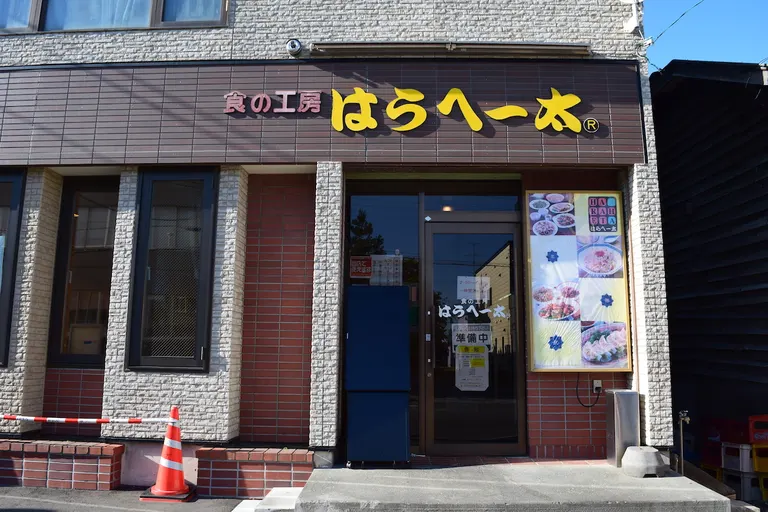
We hope you all will try a meal at Haraheta at least once.
coordinator
 Chef
Matsuda Maeda
Chef
Matsuda Maeda
Living in Hokkaido. A chef with Italian roots who loves kelp. dancyu serial series "Where is kelp going?" Ethical is delicious!! "Visiting the terroir of kelp" Recipes supported by magazines, television, newspapers, and municipalities. Chef recipes published in the Fisheries Agency project "The power of food made from the bounty of the sea JAPAN"
Recommended articles for those who read this article
■ A large collection of delicious vegetables from Kuriyama Town! Farmers' direct sales store "Agoroichi" ■ Opening sake brewing to the local community. Kobayashi Sake Brewery responds to the changing times, with the vision of fourth-generation Kobayashi Yonezaburo ■ Fresh ginger from Hokkaido is in season! Yoshida Farm is trying its hand at growing ginger in Kuriyama Town






